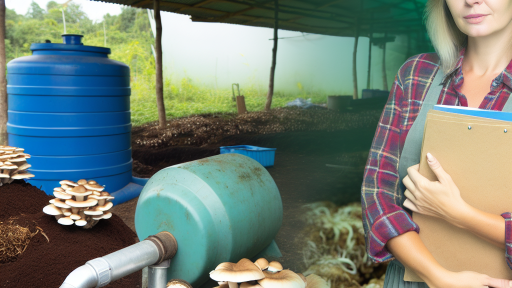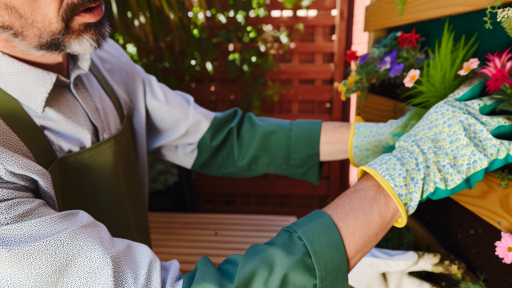Introduction to Seed Banks and Their Importance on Small Farms
Understanding Seed Banks
A seed bank stores a variety of seeds for future planting.
It helps preserve genetic diversity in crops.
Seed banks ensure that farmers can access quality seeds over time.
They play a crucial role in food security and sustainable agriculture.
Benefits of Seed Banks for Small Farms
Small farms benefit greatly from maintaining a seed bank.
Firstly, they provide access to heirloom and heritage varieties.
These varieties often have better flavors and resilience.
Additionally, seed banks allow farmers to save money on seeds.
This practice reduces reliance on commercial seed suppliers.
Furthermore, farmers can cultivate crops suited to local conditions.
This local adaptation enhances overall farm productivity.
Contributing to Biodiversity
Cultivating a variety of seeds aids in preserving biodiversity.
Biodiversity supports ecosystem balance and health.
It attracts beneficial insects and enhances pollination.
Consequently, it helps to maintain an optimal farm environment.
Transform Your Agribusiness
Unlock your farm's potential with expert advice tailored to your needs. Get actionable steps that drive real results.
Get StartedEmpowering Local Communities
Seed banks empower local farming communities.
They foster a sense of ownership over agricultural practices.
Moreover, they promote knowledge sharing among farmers.
This collaborative approach enhances community resilience.
Key Points on Seed Banks
Seed banks are essential on small farms.
They support biodiversity, reduce costs, and empower communities.
Ultimately, they play a vital role in ensuring sustainable farming practices.
Assessing Your Farm’s Seed Needs and Goals
Understanding Your Current Seed Inventory
Begin by inventorying your existing seeds.
Evaluate their viability and storage conditions.
This assessment helps identify what you need.
Define Your Farm’s Goals
Clearly outline your farming objectives.
Consider crop diversity to enhance resilience.
Decide whether you aim for market sales or personal use.
Consider Crop Rotation Practices
Identify how often you rotate crops.
This practice supports soil health and nutrient management.
Crop rotation also impacts your seed requirements.
Evaluate Climatic Conditions
Your local climate plays a significant role.
Choose seeds that thrive in your area’s conditions.
Research local varieties that adapt well to your environment.
Assess Community Needs and Preferences
Engage with your local community to gauge interest.
Understand the types of crops they prefer to consume.
Tailoring your selection to these preferences can enhance marketability.
Establishing a Seed Bank Strategy
Create a plan based on your findings.
This plan should outline your seed collection and storage methods.
Showcase Your Farming Business
Publish your professional farming services profile on our blog for a one-time fee of $200 and reach a dedicated audience of farmers and agribusiness owners.
Publish Your ProfileDocument your goals and expected outcomes for clarity.
Integrating Sustainable Practices
Incorporate sustainable practices into your seed management.
Focus on organic or heirloom varieties for biodiversity.
Sustainable approaches can improve soil health and yield.
Choosing the Right Seeds: Heirloom vs. Hybrid
Understanding Heirloom Seeds
Heirloom seeds are open-pollinated and maintained by seed savers.
They have a history of cultivation that spans generations.
Moreover, heirloom seeds often express unique flavors and traits.
This diversity can enhance your farm’s product offerings.
Additionally, they adapt well to specific local growing conditions.
Exploring Hybrid Seeds
Hybrid seeds result from cross-pollination between different plant varieties.
Farmers usually select them for specific desired traits.
These traits include higher yields, disease resistance, and uniformity.
Consequently, hybrid seeds often produce more consistent crops.
However, they may lack the genetic diversity found in heirloom varieties.
Benefits of Heirloom Seeds
- Heirloom seeds provide better flavor compared to hybrids.
- They offer a rich variety of colors and shapes.
- Farmers can save seeds for future planting, ensuring continuity.
- They contribute to the preservation of genetic diversity.
Advantages of Hybrid Seeds
- Higher yield potential maximizes production efficiency.
- Resistance to specific diseases can reduce crop losses.
- Hybrid seeds typically germinate faster and establish quicker.
- They often exhibit predictable growth patterns.
Making the Right Choice for Your Farm
Your choice between heirloom and hybrid seeds depends on several factors.
Consider your farm’s goals, market demands, and environmental conditions.
Additionally, think about the importance of flavor versus yield.
Experimenting with both types can provide valuable insights.
Ultimately, diversity in your seed bank can enhance resilience.
See Related Content: Companion Planting Ideas for Organic Farms
Essential Equipment for Building a Seed Bank
Storage Containers
Choose airtight containers to protect seeds from moisture.
Glass jars with rubber seals work effectively for this purpose.
Plastic containers should be UV-resistant to avoid degradation.
Label each container clearly to identify seed varieties easily.
Seed Drying Equipment
Utilize a seed dryer to reduce moisture content effectively.
Temperature and airflow control are crucial for successful drying.
Consider using a food dehydrator for small batches of seeds.
Inventory Management System
Implement a digital inventory management system to track seeds.
This software should handle seed types, dates, and storage locations.
Opt for user-friendly systems that simplify record-keeping.
Testing Kits
Seed viability testing kits are essential for maintaining quality.
Use these kits to determine germination rates before planting.
Invest in soil testing kits to ensure proper growing conditions.
Labeling Tools
Clear labeling tools help in organization and identification.
Waterproof labels are recommended for durability in storage conditions.
A printer for labels adds efficiency to the labeling process.
Temperature and Humidity Control
Install hygrometers to monitor humidity levels in storage areas.
Maintain a cool, dry environment to extend seed longevity.
Consider using dehumidifiers if humidity levels are high.
Miscellaneous Tools
Include scissors for opening seed packages efficiently.
Showcase Your Farming Business
Publish your professional farming services profile on our blog for a one-time fee of $200 and reach a dedicated audience of farmers and agribusiness owners.
Publish Your ProfileA good set of bags can aid in transporting and sorting seeds.
Ensure you have a workspace for organizing and preparing seeds.
Delve into the Subject: Maximizing Yields with Edible Landscaping
Methods for Seed Saving: Best Practices
Understanding Seed Saving Benefits
Seed saving provides numerous advantages for small farmers.
First, it promotes biodiversity within your farming ecosystem.
Moreover, it reduces dependency on commercial seeds.
Consequently, it can lead to cost savings over time.
Choosing the Right Seeds
Select seeds from healthy, vigorous plants.
These plants should exhibit the desired traits you want to replicate.
Additionally, focus on open-pollinated varieties.
Hybrid seeds often do not produce reliable offspring.
Proper Timing for Harvesting Seeds
Harvest seeds when they are fully mature.
This usually occurs when seed pods or fruits dry out on the plant.
Check regularly to avoid missing the optimal harvest time.
Collect seeds on a dry, sunny day to minimize moisture content.
Effective Cleaning Techniques
Once harvested, clean the seeds thoroughly.
Remove any debris, chaff, or plant materials.
Use a fine mesh sieve or screen for efficient cleaning.
Dry the seeds in a shaded, well-ventilated area.
Storing Seeds Properly
Store seeds in a cool, dry place to prolong viability.
Use airtight containers to protect seeds from moisture and pests.
Label each container with the seed variety and date collected.
Utilize the fridge or freezer for long-term storage options.
Testing Seed Viability
Occasionally test seed viability to ensure quality.
Conduct a germination test by planting a small sample.
Proper testing can prevent disappointments in future planting seasons.
Sharing and Community Building
Consider sharing seeds with fellow farmers or community members.
This practice fosters collaboration and enhances local biodiversity.
Participate in seed swaps to diversify your stock further.
Gain More Insights: Crop Rotation Plans for Organic Farmers
Establishing Proper Storage Conditions for Seeds
Temperature Control
Maintaining an optimal temperature is crucial for seed storage.
Avoid extreme heat and cold to ensure seed viability.
Set storage areas to around 40°F for best results.
Use thermometers to monitor temperatures regularly.
Humidity Levels
Humidity significantly affects seed longevity.
Keep relative humidity under 20% to prevent mold growth.
Utilize dehumidifiers or silica gel packets to control moisture.
Regularly check humidity levels using a hygrometer.
Light Exposure
Seeds should be stored in dark conditions to maintain viability.
Avoid direct sunlight, which can degrade seed quality.
Showcase Your Farming Business
Publish your professional farming services profile on our blog for a one-time fee of $200 and reach a dedicated audience of farmers and agribusiness owners.
Publish Your ProfileUse opaque containers or covers to block light effectively.
Air Circulation
Good air circulation is essential for seed storage.
Ensure that storage containers allow for airflow.
Avoid airtight containers, which trap moisture.
Consider using breathable fabric or perforated boxes.
Container Selection
Choosing the right container influences seed longevity.
Opt for glass jars, metal tins, or breathable bags.
Label containers with seed type and collection date.
Ensure containers are clean and dry before use.
Regular Monitoring
Regular checks are vital for optimal seed storage conditions.
Inspect containers for signs of pests or moisture issues.
Track temperature and humidity levels continuously.
Replace any seeds that show signs of degradation or spoilage.
Uncover the Details: Selecting Seeds For Maximum Crop Yield

Legal Considerations and Regulations for Seed Banking
Understanding Seed Laws
Seed banking requires knowledge of local seed laws.
Each region may have different regulations concerning seed collection.
Familiarizing yourself with these laws is crucial.
In some areas, you might need permits for seed storage.
Nomenclature and Plant Variety Protection
Plant Variety Protection (PVP) laws safeguard specific plant breeds.
Register your new varieties to secure legal rights.
This registration prevents unauthorized propagation of your seeds.
Moreover, using correct nomenclature is essential for compliance.
Organic Certification
If you aim for organic seed banking, certification is vital.
Certification ensures that your methods meet organic standards.
Keep detailed records of your farming practices for auditing.
This can include inputs, seed sources, and production methods.
Ethical Considerations
Beyond legal aspects, ethical seed banking practices are important.
Respect traditional agricultural knowledge and practices.
Engage with local communities to honor their contributions.
Creating equitable partnerships can enhance seed diversity.
Intellectual Property Rights
Understand how intellectual property laws affect your seeds.
Seeds can be patented, and misuse can result in legal issues.
Respect rights holders and seek necessary permissions when needed.
Compliance with Agricultural Policies
Stay informed about national agricultural policies that affect seed banking.
These policies can change over time, impacting your operations.
Engagement with agricultural agencies ensures adherence to current rules.
Documentation and Record-Keeping
Maintain detailed records of all seed transactions.
Record keeping aids in compliance with regulatory bodies.
Proper documentation also supports transparency in your operations.
Community Involvement: Sharing Seeds and Knowledge
The Importance of Community in Seed Banking
Community involvement is vital for a successful seed bank.
Showcase Your Farming Business
Publish your professional farming services profile on our blog for a one-time fee of $200 and reach a dedicated audience of farmers and agribusiness owners.
Publish Your ProfileWhen local farmers share seeds, they promote biodiversity.
Additionally, sharing knowledge enhances agricultural practices.
Creating a Seed Exchange Program
Start a seed exchange program in your community.
Invite local farmers to bring their seeds.
Encourage them to share their experience and growing tips.
This creates a supportive environment for learning.
Hosting Workshops and Events
Organize workshops to educate the community about seed saving.
Invite experts to share techniques and best practices.
Hands-on demonstrations help participants gain confidence.
Moreover, events can foster a sense of belonging among farmers.
Building a Network of Local Farmers
Create a network to encourage collaboration among local farmers.
A strong network enhances the sharing of resources.
Farmers can exchange ideas on crop rotation and pest management.
This collaboration also opens opportunities for co-planting.
Utilizing Social Media for Outreach
Leverage social media platforms to reach a wider audience.
Share stories of successful seed sharing and workshops.
Encourage community members to share their experiences.
Online engagement can inspire others to participate.
Establishing a Seed Library
Consider setting up a seed library within your community.
Seed libraries allow members to borrow and return seeds.
This encourages sustainable practices and biodiversity.
It also fosters a culture of sharing and cooperation.
Maintaining Seed Viability: Testing and Renewal Strategies
Understanding Seed Viability
Seed viability refers to the ability of a seed to germinate and grow into a healthy plant.
Over time, seeds can lose their viability due to environmental factors and age.
It is crucial to monitor seed viability regularly to maintain a robust seed bank.
Testing Seed Viability
Testing seed viability involves several methods that ensure reliable results.
A simple method is the germination test.
For this test, gather a sample of seeds and place them on moist paper towels.
Keep the towels in a warm area and monitor for germination over a week or two.
If 70% or more of the seeds germinate, they are considered viable.
Alternative Testing Methods
Another method is the float test, especially useful for larger seeds.
Place seeds in water and observe which seeds float and which sink.
Typically, viable seeds sink, while empty or damaged seeds float on the surface.
Additionally, you can use tetrazolium staining to assess seed viability at a cellular level.
This method indicates if seeds have living tissue based on color change upon staining.
Renewing Seed Stocks
To maintain high-quality seed stocks, consider growing replacement crops periodically.
Rotating your crops helps rejuvenate seed viability while preventing soil depletion.
Harvest seeds from healthy plants to ensure their genetic quality.
Storing these seeds correctly helps preserve their vitality for future use.
Optimal Storage Conditions
Proper storage conditions enhance seed longevity and quality.
Showcase Your Farming Business
Publish your professional farming services profile on our blog for a one-time fee of $200 and reach a dedicated audience of farmers and agribusiness owners.
Publish Your ProfileStore seeds in a cool, dry, and dark environment to minimize deterioration.
Use airtight containers to protect seeds from moisture and pests.
Label containers with the variety and date of storage for easy access.
Regular Inventory Management
Conducting regular inventory checks will keep your seed bank organized.
Always review seed viability before planting or using them for breeding.
This regular management can prevent surprises during planting season.
Additionally, rotate older seeds to the front to prioritize their usage.
Engaging with Local Seed Communities
Connect with local seed saving groups for knowledge and resources.
Participating in seed swaps allows you to diversify your seed collection.
You can also learn from others’ experiences about best practices in seed preservation.
The Long-Term Benefits of a Seed Bank
Preservation of Genetic Diversity
Maintaining a seed bank allows you to preserve genetic diversity.
This diversity supports resilient crops for changing climates.
By saving seeds, you protect heirloom and rare varieties.
Cost Savings Over Time
Building your own seed bank can lead to significant cost savings.
You reduce reliance on commercial seed suppliers.
Additionally, saving seeds can minimize planting expenses each season.
Enhanced Crop Adaptation
A seed bank enables you to select seeds best suited for your farm.
You can cultivate plants that thrive in your local conditions.
Ultimately, this adaptability leads to better harvests over time.
Educational Opportunities
Creating a seed bank provides educational opportunities for your community.
You can host workshops on seed saving and sustainable practices.
Moreover, this knowledge sharing fosters a sense of community support.
Long-Term Sustainability
A seed bank contributes to the long-term sustainability of your farm.
By valuing local resources, you maintain self-sufficiency.
This practice reduces dependence on external sources for seeds.
Encouraging Biodiversity
Establishing a seed bank plays a crucial role in promoting biodiversity.
You can cultivate a variety of species that attract beneficial insects.
Furthermore, diverse plants improve soil structure and health.




